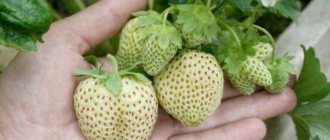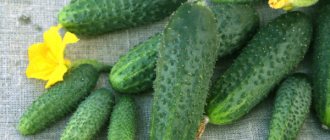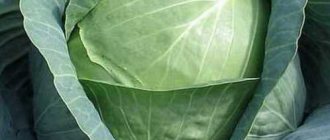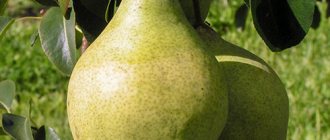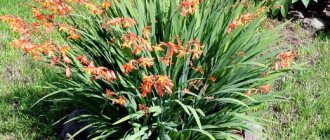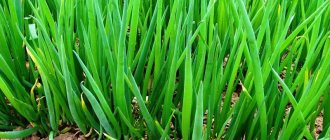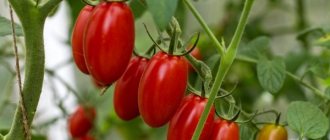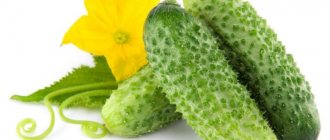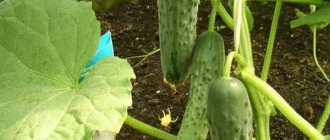Strawberry Marshall has large berries, juicy and sweet. The plant is unpretentious in planting, growing and caring. Resistant to frost and major pests. In this article we will look at ways to plant and care for strawberries.
strawberry variety "Marshal"
for the excellent taste of the berries, the “Marshal” variety is increasing in popularity
Strawberries "Marshal" can safely survive the hottest and rainiest summer
History of origin of the variety
The strawberry seedling, later named “Marshal,” was accidentally discovered in 1890 by Marshall F. Ewell on a ranch in Marshfield Hills, Massachusetts, and was introduced to the public as an independent variety in 1893.
Over the next fifty years, the variety has become a leader in the industrial berry market of the Pacific Northwest, establishing itself as America's most delicious berry. It is known from open sources that in 1925, Dr. Ulysses Hedrick, who worked in the horticulture department of the New York State Agricultural Experiment Station, gave a botanical description of “Marshal”. In 1966, George M. Darrow, then the leading American authority on strawberries, confirmed that between 1910 and 1945 the variety was grown in fields in central and northern California, Sacramento, Oregon and Washington, primarily for commercial processing, primarily queue for the production of frozen strawberries. In the fields of central and northern California, "Marshal" was grown under the name Banner, and in Sacramento - as Oregon Plum.
Although the berries became soft after defrosting, they retained their taste and deep red color.
Despite the excellent taste and marketability of the fruits, the variety turned out to be too “capricious” for farmers: it requires intensive agricultural technology, is prone to late blight, viral and mycoplasma diseases, and pest damage. In addition, it had low transportability and shelf life due to the loose structure of the berry skin. Therefore, since the late 40s of the last century, “Marshal” was replaced with more productive and hardy varieties. But at the same time, thanks to the work of famous American breeders, the plant became the progenitor of a number of valuable varieties of strawberries bred in the USA (for example, “Catskill”).
Since 2004, American experts have included the Marshall variety in the list of “700 food products, animals and plants that are in danger of extinction.”
Manufacturers promote the variety as “ideal, with amazing taste,” but when purchasing planting material, you need to take into account that promising advertising descriptions in practice do not always meet gardeners’ expectations. Productivity and taste, like any other variety of crop, largely depend on the weather and climatic conditions of the growing region and the level of intensity of agricultural technology.
Medicinal properties
Like many gifts of nature, strawberries also have medicinal properties. In addition, it contains macro- and microelements, which are so necessary for the good functioning of the body.
This garden crop, including the Marshall strawberry, the description of the variety indicates that it belongs to fruits that have a minimum of sucrose, and also contain equal amounts of fructose and glucose.
Fresh berries not only have delicate pulp with a pleasant aroma and wonderful taste, but also bring great benefits to the body. Due to the high content of potassium in the fruits, any type of this crop, including Marshall strawberries, a description of the variety, a photo of which is of interest to many summer residents who want to plant it on their plots, facilitates the work of the heart muscle and regulates blood pressure. Its frequent consumption, according to experts, protects against depression and helps supply the human brain with oxygen. In addition, calcium and fluoride, which are found in large quantities in any variety of strawberries, strengthen teeth and bones.
It is recommended as a prophylactic for diseases of the joints, kidneys, urinary tract, atherosclerosis, loss of strength, vitamin deficiency, the recovery period after serious illnesses, decreased immunity, etc.
Description of the variety "Marshal"
Strawberry Marshall is a mid-season variety. It fully develops and bears fruit in the cold Russian climate. Adapts well to different weather conditions and soil composition. Able to tolerate drought. In summer, the berry harvest is high. They are larger than average in size, juicy and look presentable.
The variety was brought to our country after the Second World War from the USA, where it was bred by the American breeder M. F. Well at the end of the 19th century.
Features of bushes
Strawberry Marshall grows up to 0.15 m. The plant has the following structure:
- branches branch widely to the sides;
- the stems are thick and dense;
- leaves: large with a light green color; have a glossy shine; the shape resembles an umbrella; grow densely and protect the fruits from excessive sunlight and birds;
- the root is strong with numerous shoots;
- the peduncle consists of dense stems;
- they bear large flowers with a bright center;
- flowers rise above the bush.
The Strawberry Marshall variety is characterized by the growth of numerous mustaches, so the plant is easy to propagate. It is better to trim off excess mustache during active growth and fruiting.
Productivity
A high-yielding variety: in a mild and warm climate and with proper care, more than 800-900 g of berries are harvested from one tuber. In warm climates, fruit harvest almost doubles.
The berry ripening period begins in June and ends in September. Marshall strawberries begin to bear fruit in the first summer after planting, but in each subsequent harvest season the number of berries collected decreases.
It is better to pick strawberries in the afternoon. At this time, there is less excess moisture in it and the shelf life increases.
Berries
Fruit characteristics:
- large size;
- slightly elongated shape with a flattened tip;
- weight from 38 to 65 g;
- the appearance is rich poppy with a slight shimmer;
- solid inside, without voids;
- medium density consistency;
- when cut, the fruit is of a less saturated shade;
- the taste is sweet with a hint of sourness,
- pronounced strawberry aroma;
- The seeds are yellow, small, and almost unnoticeable when eating the berries.
Reviews
I got rid of "Marshal". The berries are beautiful, but the taste is sour, and spots are strongly affected. It’s practically impossible to bring it home; the fruits are very soft and wrinkled.
I have two varieties of strawberries: Honey and Marshall. The second one is about 30% more productive, the berries are larger. I am in the garden only on weekends, both varieties respond well to such agricultural technology, so far there have been no attacks (except for winter ones).
Marshall strawberries have many advantages that gardeners should pay attention to. Among them are excellent taste and high drought resistance. Therefore, the plant can be planted in summer cottages where it is impossible to organize proper watering. Strawberry bushes produce a large number of mustaches; propagation is not difficult. With minimal care, the gardener gets a good harvest of delicious, aromatic berries.
Planting strawberries
The method of planting Marshall strawberries is the same as for other varieties. The best time is early spring, when weather conditions stabilize. Read about how to plant strawberries in spring in this article.
Some gardeners in warm climates plant strawberries in late fall. But this is not the best way to get a good harvest. There is a possibility of young seedlings freezing in winter, which is the result of insufficient rooting due to the short period of time before winter.
For those who still decide to plant in the autumn, it is worth choosing a time several weeks before the onset of frost so that the plant can better adapt.
Choosing a landing site and soil requirements
Marshall strawberries will grow well if you choose the right planting location. It should be:
- well lit, not obscured by tree crowns;
- It is better to choose a place on the south side of the site, where the sun's rays warm the soil the most;
- with a flat surface, without slopes or lowlands, since during heavy rainfall the accumulation of water must be avoided;
- the area should be ventilated, but strong drafts should be avoided.
Before planting, you need to pay attention to the crops that grew before. Avoid: potatoes, zucchini, cucumbers and tomatoes.
Recommended predecessor crops: onion, garlic, dill, parsley, radish, radish, legumes, carrots, daffodil and others.
Soil requirements:
- Most suitable: slightly acidic, loamy and sandy loam.
- Before planting, it is loosened to achieve lightness and the ability to pass moisture.
- In autumn you need to add organic fertilizers: compost or humus. For loamy soil, add sand, sawdust and ash in addition.
When preparing the soil in the fall, dig it up, remove roots, leaves and branches to avoid the persistence of pathogenic organisms and subsequent infection of strawberry bushes.
Preparation of seedlings
The best time for planting is the first months after winter, then the plant takes root well in the soil and develops. This will allow the strawberries to safely withstand the cold during the winter.
The root system of seedlings must be disinfected before being planted in the ground. Dip the roots into a weak solution of manganese for a few minutes and rinse with clean water.
Planting scheme
The Marshall Strawberry bush is quite large. In summer, the upper part of the plant especially grows and the root system expands. For the full development of the plant, you should adhere to certain planting distances:
- plant seedlings every 1/4 m;
- Leave a space of up to 0.8 m between the beds.
Strawberry bushes can be planted by alternating diagonally, adhering to the normal distance.
Planting strawberries
The procedure for planting seedlings is very simple:
- Dig holes in the ground with a depth equal to the length of the seedling's root.
- Carefully place the plant in the hole, straighten the roots and sprinkle with soil. Root deformation leads to slow development and very small yields.
- After planting, water the plant thoroughly.
- After some time, loosen the soil to allow moisture to reach the roots.
Favorable time for planting is evening and cloudy weather.
Formation of beds
For garden strawberries, this process is quite important. It is done manually. To be practical, the location for the beds should be chosen in clayey or undrained damp areas. They can also be done on low, damp hills, where the water stagnates in the spring, and in the summer or autumn, during the period of prolonged rainfall, the soil is waterlogged. With this choice of location, the heating and ventilation of the earth is improved, and the drainage of excess water is also facilitated. In addition, the gardener is recommended to take into account not only traditional criteria, but also the location of the rows of seedlings, and in general, site planning. This is especially true for a variety like Marshall, which has a fairly rich green part, which means that it can decorate the garden well. It is also necessary to pre-treat the soil.
Features of care
In order for the plant to feel good in the garden, and for the berries to be large and juicy, it is worth caring for it properly. Timely harvesting plays an important role in the health and full growth of the strawberry bush.
Overripe berries attract insects and small rodents. They become a favorable environment for the proliferation of bacteria and putrefactive processes.
Watering
The first abundant watering after planting is done in late spring, when active growth begins. Next, water regularly as the soil dries out. Finished after harvesting the last harvest at the end of September.
Watering time: early morning or evening, after sunset. The moisture should be well absorbed. Its evaporation during the daytime can lead to burn damage to stems and leaves.
Water the plant with caution: pour water at the root, avoid getting moisture on the leaves and flowers.
Watering frequency: in moderate climates, once a week is sufficient. In summer and in hot weather, watering is increased 2-3 times.
During dry periods, strawberries are mulched: with hay, sawdust or dry grass to prevent moisture evaporation.
Loosening
Do not allow the soil around the strawberry bush to harden. The access to oxygen and moisture will be noticeably reduced and the plant will begin to wither. To avoid this situation, it is worth periodically, as needed, to loosen the soil.
Fertilizer application
In soil with enough fertilizer before winter, strawberries grow well and can do without additional fertilizing. If the shoots have noticeably become thinner, this means a lack of potassium in the soil. Mineral fertilizer should be added, as well as wood ash.
For preventive purposes, supplements of organic and mineral origin are applied. During the period of active growth in May, during the ripening of berries in June and after the final harvest of berries in September, it is recommended to use fertilizers to replenish the plant's strength.
Fertilizers are applied along with watering and loosening the soil. The following fertilizers are used: mullein, bird droppings, wood ash and weed infusions.
The Marshall strawberry variety is very sensitive to inorganic fertilizers. If the dosage is incorrect, the root system can be severely damaged.
Reproduction
It is possible to propagate the Marshall strawberry variety in three ways:
- Seeds. Seeds are sown in February.
- Usami. Rosettes take root very well, so this propagation method is used most often. The plant produces a large number of tendrils. Bushes intended for propagation are marked in advance. Peduncles are cut off. All the attention of the mother plant should be directed to the rosettes.
- Dividing the bush. This method is suitable for early spring. With this method of propagation, the harvest from young plantings can be obtained already in the current season.
Spring planting dates are preferable. The strengthened plant will be well prepared for winter.
a brief description of
It’s not for nothing that Marshall strawberries have been popular among gardeners for several decades. She has more advantages than disadvantages.
Advantages of the variety
- consistently high yield with a minimum of care, which can be obtained already in the first year of planting;
- easy adaptation to different climatic conditions;
- Bears fruit for a long time, starting in mid-June;
- good taste;
- versatility of use (fresh, frozen, compotes, jams);
- the plant saves itself from hot rays and from voracious birds;
- Does not require an abundance of fertilizing;
- high drought resistance, even with untimely watering will give a good harvest;
- refers to frost-resistant varieties;
- high immunity to most strawberry diseases.
Disadvantages of the variety
- when transporting fruits, increased caution and special containers are required;
- due to a decrease in yield, a new plantation needs to be established in the second year;
Increased rooting and good rooting of rosettes are both advantages and disadvantages. Strawberries are easy to propagate, but throughout the summer it is necessary to ensure that the tendrils and rosettes do not take away the juices from the fruiting bush.
Diseases and pests
Strawberry Marshall has good immunity to viral diseases and harmful pests. To prevent diseases, marigolds, aromatic herbs and garlic are planted between the beds.
If a disease occurs, the bushes should be sprayed with a special compound purchased at any specialty store.
Sprayers should not be used during flowering and harvesting. The berries absorb harmful compounds and, once ingested, can cause poisoning.
If infected with a fungus, the plant should be sprayed with a fungicide and all tendrils should be cut off. If necessary, repeat spraying.
If you are infected with a strawberry mite, you need to thoroughly disinfect everything and dig up the soil. The tick is more active in late spring and summer. It is a carrier of dangerous fungal diseases.
It is possible to understand that strawberries are affected by mites by the leaves twisted into a tube only in the middle of summer. At earlier stages it is difficult to detect a tick. It cannot be seen with the naked eye. If you do not disinfect and spray with special preparations, the mite will not disappear on its own, but the plant will turn yellow, decrease in size and may die completely.
Whitefly infestation is one of the most destructive nuisances. First, they, in the form of small insects, settle in the lower part of the bush, as they do not like sunlight. The next development cycle is transformation into a butterfly. She has white wings, which is where the name comes from. Butterflies parasitize the leaves and drink their juice.
Loosening the soil is the best prevention against whiteflies. The adult is disposed of using adhesive yellow plywood sheets placed between the beds.
